




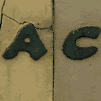

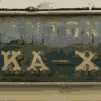



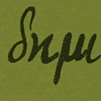




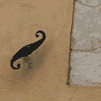
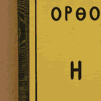







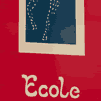





 Corfu
author: Slavko Milenković
Corfu
author: Slavko Milenković
 Corfu
author: Slavko Milenković
Corfu
author: Slavko Milenković
 Corfu
author: Slavko Milenković
Corfu
author: Slavko Milenković
 Corfu
author: Slavko Milenković
Corfu
author: Slavko Milenković
 Corfu
author: Slavko Milenković
Corfu
author: Slavko Milenković
 Corfu
author: Slavko Milenković
Corfu
author: Slavko Milenković
 Corfu
author: Slavko Milenković
Corfu
author: Slavko Milenković
 Corfu
author: Slavko Milenković
Corfu
author: Slavko Milenković
 Corfu
author: Slavko Milenković
Corfu
author: Slavko Milenković
 Corfu
author: Slavko Milenković
Corfu
author: Slavko Milenković
 Corfu
author: Slavko Milenković
Corfu
author: Slavko Milenković
 Corfu
author: Slavko Milenković
Corfu
author: Slavko Milenković
 Corfu
author: Slavko Milenković
Corfu
author: Slavko Milenković
 Corfu
author: Slavko Milenković
Corfu
author: Slavko Milenković
 Corfu
author: Slavko Milenković
Corfu
author: Slavko Milenković
 Corfu
author: Slavko Milenković
Corfu
author: Slavko Milenković
 Corfu
author: Slavko Milenković
Corfu
author: Slavko Milenković
 Corfu
author: Slavko Milenković
Corfu
author: Slavko Milenković
 Corfu
author: Slavko Milenković
Corfu
author: Slavko Milenković
 Corfu
author: Slavko Milenković
Corfu
author: Slavko Milenković
 Corfu
author: Slavko Milenković
Corfu
author: Slavko Milenković
 Corfu
author: Slavko Milenković
Corfu
author: Slavko Milenković
 Corfu
author: Slavko Milenković
Corfu
author: Slavko Milenković
 Corfu
author: Slavko Milenković
Corfu
author: Slavko Milenković
 Corfu
author: Slavko Milenković
Corfu
author: Slavko Milenković
 Corfu
author: Slavko Milenković
Corfu
author: Slavko Milenković
 Corfu
author: Slavko Milenković
Corfu
author: Slavko Milenković
 Corfu
author: Slavko Milenković
Corfu
author: Slavko Milenković
 Corfu
author: Slavko Milenković
Corfu
author: Slavko Milenković
 Corfu
author: Slavko Milenković
Corfu
author: Slavko Milenković
TYPOGRAPHY IN CORFU
author: Olivera Stojadinović
Corfu (Κερκυρα), the northernmost and greenest Greek island in the Ionian Sea is covered with olive trees (about 4 million trees), and at its center is a high mountain range with the top of Pantokrator.
Historical monuments are dating from various periods, from the golden age of classical Greek statehood, via Rome and Byzantium, to Venetian fortress from the Middle Ages and traces a short period of the French government, and then the British protectorate that (1864) finally became part of modern Greece. It is believed that Corfu was a side point on the road to Odysseus' Ithaca. For us, Corfu is the last destination for exhausted Serbian army during the First World War. Corfu is in all conductors marked as toponim important for Serbian history, which is documented in museum exhibition in the Serbian house which is situated in the old town of Corfu.
The Greek alphabet is the first phonetic script of European civilization, from which it is derived Latin, and later Cyrillic. Primary script was formed around the year 800 BC. The direction of writing is finally determined from left to right. Ionian version of the alphabet of 24 letters is becoming a standard in 403 BC. In the 3rd century BC, the set of capital letters was enhanced with manuscript, uncial variants from which are developed lower case letterforms. Established forms of Greek letters have not experienced significant changes, except that the diversity of vocals is determined by a number of characters with diacritics. Some years ago, under the influence of computer technology, writing is simplified by removing diacritics in modern communication, but the old characters are still in use when printed classics.
During the Renaissance, Greek language is the language of educated people. Venetian printer Aldus Manucius printed in Greek most of his editions, and the other typographers cut their own sets of Greek letters.
In the modern era the Greek language has lost its universal character. Greek script is used for the Greek language, but also for the mathematical symbols, so they are present in the computers as specialized mathematical fonts. Demand for Greek fonts is limited to the Greek language area, but the offer is insufficient. Lower case is stylistically different from the capitals, and the cursive looks like skewed normal. Handwritten forms are not developed to match the European civil letter, but some calligraphic inscriptions cuold be seen. Some vocals are not assocciate to single letters, the combination of two letters is used (for example, B is spelled as MP).
All this does not prevent the Greeks from using their alphabet. With the entry of Greece into the European Union, Greek alphabeth, in addition to the Latin, become the second official script to the Union and is applied on the European banknotes.
In Corfu you can see many fancy inscriptions. The letters are often carelessly drawn with charm, which contributes to the appearance of an interesting logos. They are mostly colored and decorated with a picture or ornament. More offten they are painted in classic manner or executed by stonemason rather than by use of new technologies.
Today, Corfu is primarily a tourist destination, so everything on the island is customized that way. English is the universal language of communication, and is, more or less, spoken by all. In addition to mandatory inscription in Greek, there are necessary explanations in English language and Latin transcription of names, usually in slightly smaller font size. Public signalization such as street names and traffic signs are also written both in the Greek and Latin, but the Greek inscription is greater in size, or more prominent in color.